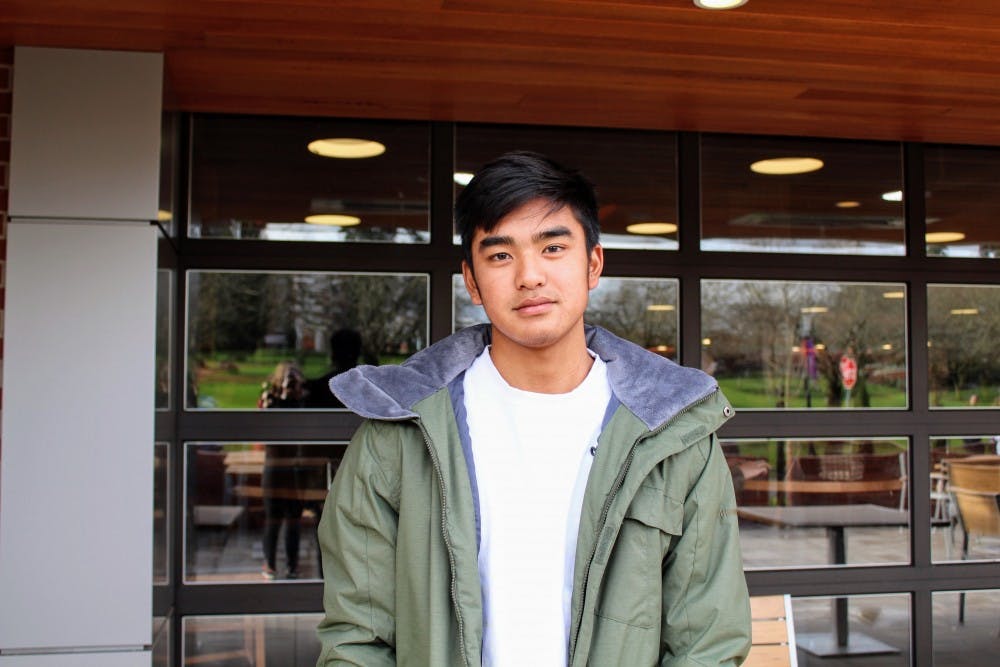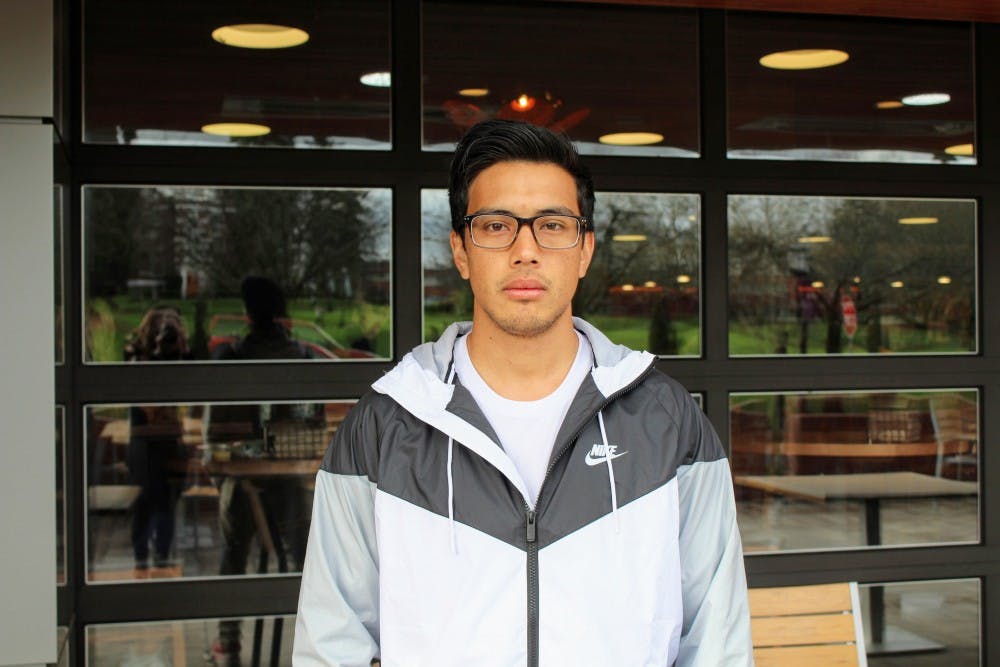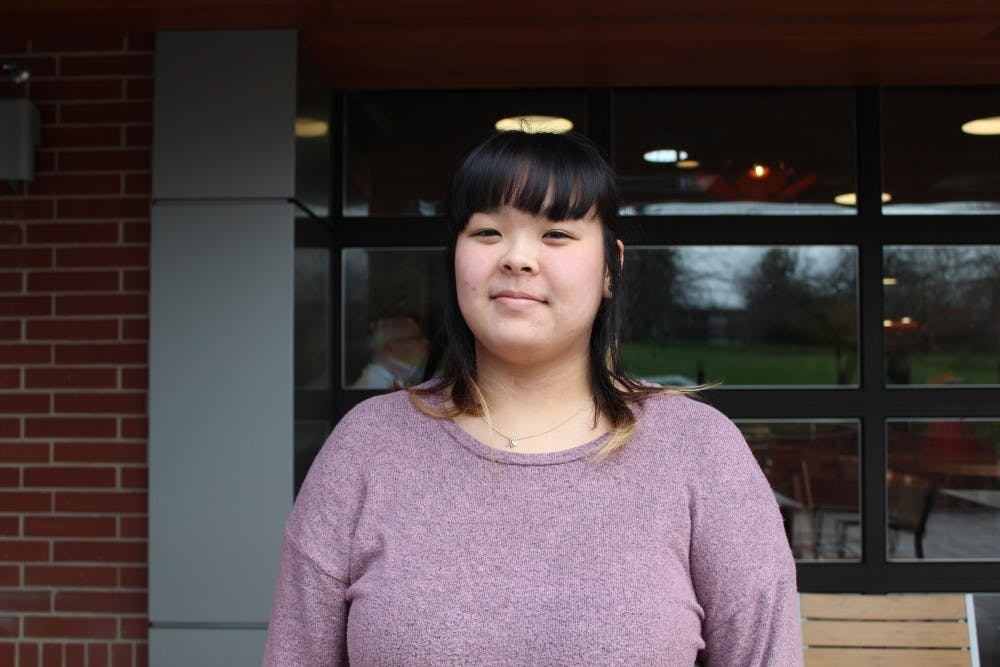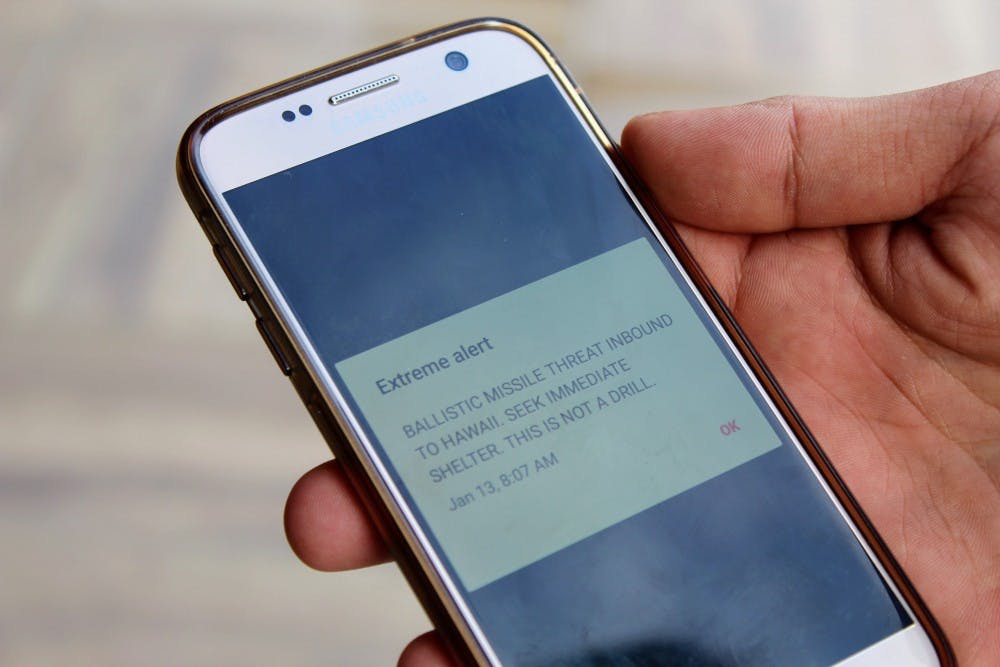Elijah Nishihara said he and his sister ate green tea ice cream before they left their home for the airport in Kauai because they wanted it to be the last thing they ate in case something happened.
On Saturday, Jan. 13, a ballistic missile strike cell phone text alert was sent out to the residents of Hawaii at 8:07 a.m. In all caps, it read: “BALLISTIC MISSILE THREAT INBOUND TO HAWAII. SEEK IMMEDIATE SHELTER. THIS IS NOT A DRILL.” Sirens went off in some cities as well.
Students from the University of Portland were among those frightened individuals affected by this “human error.” About 330 undergraduate students have Hawaii listed as their state of residency.
For 38 minutes, panic struck the Hawaiian islands as residents, tourists and others believed they only had minutes to live. It wasn’t until the state government sent out a second alert explaining the initial alert was a mistake.
There was in fact, no missile threat. It was a false alarm. Hawaii Emergency Management Agency officials said someone had accidentally pushed the wrong button, sending out the real alert versus the drill alert. Hawaii state officials blamed it on human error.

Nishihara, a freshman from the island of Kauai, said he and his sister were scared and confused when the text alert popped up on their phones.
“We weren’t really sure what was happening or if it was real or not,” Nishihara said. “Then we saw news reports and we kind of started to get more worried.”
During the 38-minute window before the second alert, Nishihara said goodbye to his family and left to go to the airport to fly back to Portland.
Before they arrived at the airport, the second alert was sent out notifying them it was a false alarm. But flights were still delayed throughout the airport.
“The flights when there was the (initial) notification got delayed, which pushed other flights back,” Nishihara said. “I was actually supposed to be on a connecting flight (on Oahu)… I literally had to run to my gate.”
Though Nishihara almost missed his flight, he said he felt relief, not anger.
“We shouldn’t be angry because it was a false alarm. We should be happy there wasn’t actually a missle,” Nishihara expressed. “I’d rather celebrate being safe than be angry at somebody for making a mistake.”
Another student, Riley Sakamoto, a junior from the island of Oahu, said he felt outraged when he realized the alert was a false alarm.

“The biggest wonder is how can someone press the wrong button?” Sakamoto said. “It’s so elementary and hard to believe.”
Sakamoto said he was supposed to fly back to Portland that day. His father works near the airport, and was trying to figure out from his colleagues what was going on to make sure his son could return safely.
“It’s a huge inconvenience for not only my family, but for a lot of people,” Sakamoto said. “A lot of unnecessary worry.”
Though the alert caused panic among residents and tourists, Sakamoto explained it showed how responsive people are to alerts like these. Many businesses opened their basements for shelter and provided food and water during the time of uncertainty and fear.
However, Kiana Hiranaga, a junior from the island of Maui who was scheduled to fly back to Portland on the day of the alert, said families on the island felt powerless after the message went out.

“I feel that it showed us how unprepared we are, but now they (Hawaii Emergency Management Agency) need to show us ways to prepare ourselves,” Hiranaga explained. “We just stayed in the house because there’s nothing else we were taught to do.”
The first alert woke Hiranaga up. Anxious and confused, she went to turn on the news to find out more about what was happening, but there was nothing about the alert.
“We were like, ‘What’s happening? It’s not on the news anywhere,’” Hiranaga said. “So it took a long time for news to break about it.”
Instead, Hiranaga said she found out the alarm was not real due to a tweet posted by Representative Tulsi Gabbard, which came before the second alert saying it was a false alarm was even sent out.
Like Nishihara and Sakamoto, Hiranaga said she had a flight at 1:00 p.m to come back to Portland. When she arrived at the airport, she said it was hectic and everyone was still talking about what happened.
“We were all kind of worried at first, and kind of scared,” Nishihara said. “We were confused at the same time because we weren’t sure what was happening or if it was real or not.”








